International Swimming League Debrief. Part 2: The Downside Of The First ISL Season
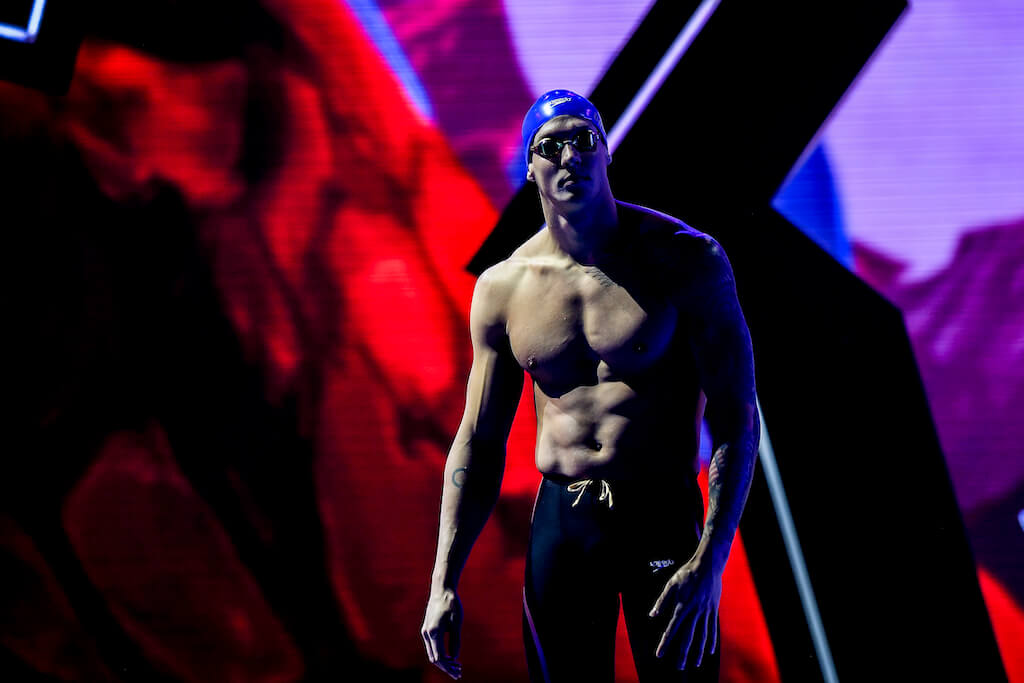
Over the coming three days, the Swimming World writing team will bring you its collated thoughts on the first season of the International Swimming League. The exercise takes a look at what we perceive as pros, cons (Pro et contra – for and against) and solutions that we recommend the League takes into account when holding its essential debrief.
On the whole, the Swimming World Team agrees. There are nuances in the mix and some observations and proposed solutions raise more questions than they provide answers.
The point is not to have an argument but simply list the key observations of a team of writers that knows its swimming, is supportive of the League, the changes it has brought to a sport in need of a new model and a truly Pro-Athlete platform, but has kept a keen and balanced eye one step back from the obvious and entirely understandable gushing support from athletes, the coaches involved and, of course, the organisers of the League.
- Contributions from: Liz Byrnes, Dan D’Addona, Ian Hanson, Sabrina Knoll, John Lohn, Craig Lord, Andy Ross and a few wise folk who have spent the first ISL season at the water’s edge.
- We invite readers to join our exercise by posting comments at the end of this article or visiting our pages on Facebook, Twitter and Instagram to leave their own observations and views on the first League season
Yesterday we looked at Part 1: The Upside Of The First ISL Season
Part 2: The Cons of a New World Of Pro-Team Swimming
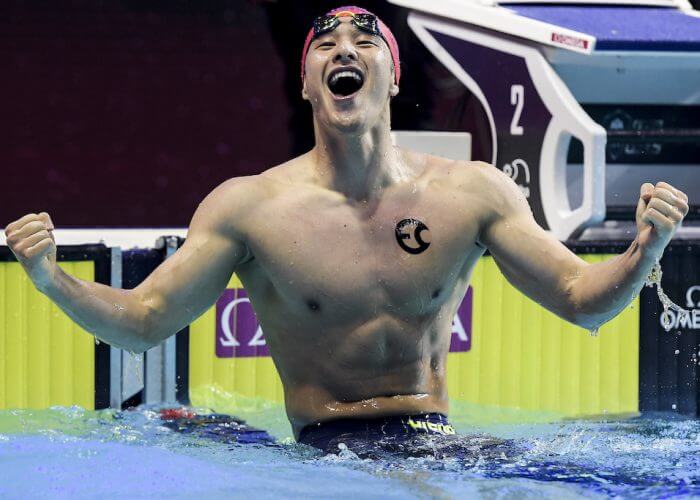
Daiya Seto delight at setting the World Record over 400m medley at the International Swimming League Final in Las Vegas – Photo Courtesy: Gian Mattia D’Alberto/LaPresse
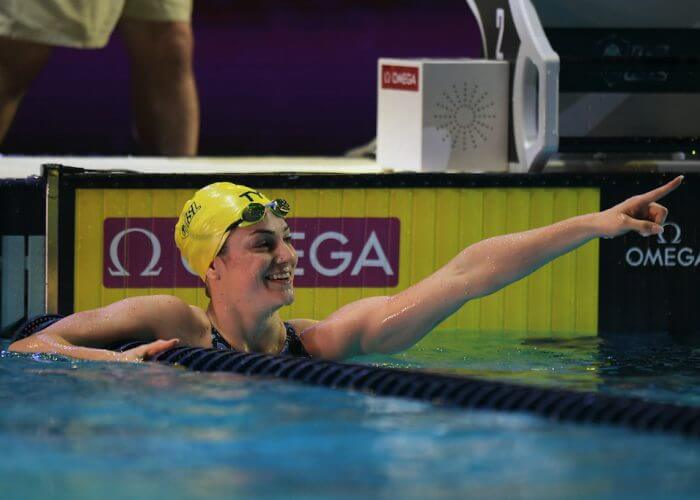
Beryl Gastaldello – Photo Courtesy: Gian Mattia D’Alberto/LaPresse
For today’s exercise, we’ve split the theme sub headings into the following categories:
- Back To Basics
- Clock
- Format – and sprint free bias
- Press
- Season
- Team Strength
- TV Production
- Venues
1. Back To Basics
- Name: “If you google ISL all you get is Indian Super League cricket”. True … and deeper yet, you find the marketing agency (erstwhile used by the International Olympic Committee and FINA) that went bust.
- Organisers should remove that acronym from the public lexicon taking shape and focus on a name that includes the core subject: swimming. How about “iswimleague”, an event name to build a basic but effective marketing campaign around and simply get the world’s best swimmers speaking that iconic phrase ‘iswim!’. It is not too late to think again on such things and not fall into traps long laid in titles such as federations with the ‘A’ for amateur in their acronym but keen to shed that look and feel.
- Team colours – there were just eight teams: Energy Standard, Cali Condors & LA Current all chose navy blue, while Iron & Breakers chose black. More teams will be formed: colour and branding and setting each apart could and should be sharper and more inventive.
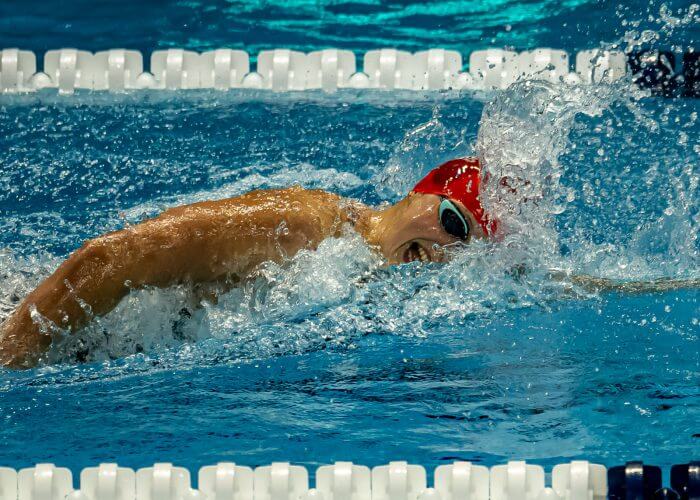
Katie Ledecky – Photo Courtesy: Peter H. Bick
First season, for example, could have been:
- Energy Standard – Blue
- Cali Condors – Orange
- LA Current – Yellow
- Iron – Black
- NY – Silver
- Trident – Red
- Roar – Green
- Aqua Centurions – White
2. Clock
- There’s a lack of emphasis on times.
- Racing and placing have been emphasised by the League and there’s no question that tight racing is great and sells but removing the clock from the picture was a shortcoming. It is not enough to briefly flash the winning time up on TV screens – indeed, that annoyed the hell out of fans and media and meant that incredibly tight races were not called as such.
- When a very tight race is won, the human mind wants an immediate answer, beyond what it saw for itself, to the question: ‘how tight’?
- The lack of a clock on the race across the pool removed one of the fundamentals of swimming: how swimmers measure up to each other, precisely, not in general, with 2nd off the chart of ‘how close’ and 3rd to 8th insignificant beyond a number, that number a points score.
- Swimming is a stopwatch sport, and time matters.
- No readily accessible live timing – to have that for fans would not matter to the wider audience the emphasis on racing (not clock) is supposed to attract.
- The lack of times for at least top three left out a crucial part of the picture and experience for the audience.
- The setting of World records and the thrill associated with those proved the point: you must have the clock on and it must be visible to the crowd, on location and remote.
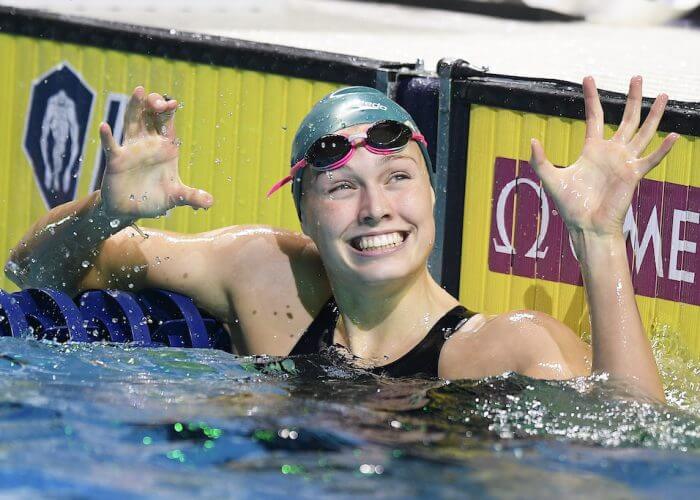
Minna Atherton – World- record Roar With a Smile – Photo Courtesy: Fabio Ferrari/LaPresse
3. Format – and sprint free bias
(More on this theme tomorrow in ‘solutions’)
a. Whither distance events?
- No distance events for fans of endurance races
- What’s wrong with adding an 800 free? There’s no reason why Gregorio Paltrinieri can’t be in the League.
- Although the two-hour allotted time proves to be a hindrance, not featuring an 800 freestyle immediately reduces the value of a swimmer such as Katie Ledecky, who can be argued as the finest female swimmer in history. This format glitch is unfortunate, as an 800 freestyle can be enjoyable, especially when a legend like Ledecky is racing.
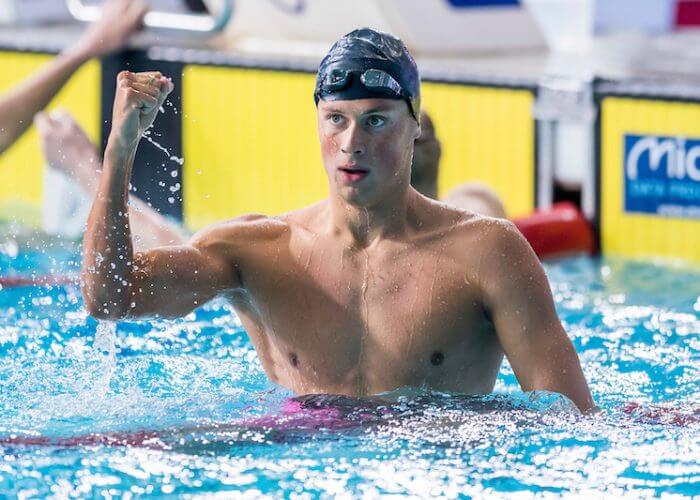
Mykhailo Romanchuk; Photo Courtesy: Andrea Masini/ Deepbluemedia /Insidefoto
b. Equal treatment of all swimmers
- The League preaches “equal pay” but they don’t treat all the swimmers equally since Caeleb Dressel gets significantly more events to swim than Mykhailo Romanchuk; and Adam Peaty hasn’t a chance of getting more MPV points than Vladimir Morozov, which does not reflect the standing ion the swimmer in the league of most valued players in the wider and established world of swimming that includes Olympic Games and World Championships
c. Skins
- These shouldn’t always be freestyle or only freestyle. If you disadvantage a swimmer like Peaty, you’re missing a promotional trick, while introducing bias to a sport and ignoring its complexities by attempting to introduce ‘singular activity’ thought pertinent to other sports, such as a tennis and golf.
- By introducing freestyle spin bias, the League risks aliening fans who recognise that some outstanding swimmers, distance, strokes, are being deliberately disadvantaged.
- Sprint freestylers handed a gold ticket of huge advantage when it comes to MPV status and the rewards that might flow.
d. Switch up short-course and long-course
- Only short-course competition, especially with an Olympic year beckoning, did not provide enough variety in performances that were produced. Long-course competitions could also have been included to promote athletes who flourish in both formats.
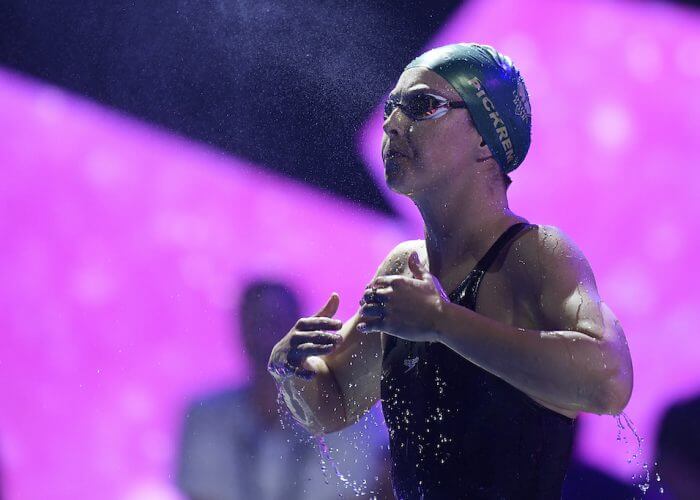
Sydney Pickrem – Photo Courtesy: Fabio Ferrari/LaPresse
e. Media friendly
- From a media standpoint, the rapid-fire nature of the events does not lend itself to fan-friendly coverage. The races unfold too close in proximity to one another and do not allow for journalists to present analysis or reflection on what is unfolding.
- The whole approach to written media needs revisiting. It was inconsistent, poor and adversely affected the way the League was covered by mainstream media worldwide … that coverage was widely poor to non-existent this year beyond the coverage of athletes saying why they backed change and what it meant to them. The actual swimming, the League competition drew little mainstream media attention.
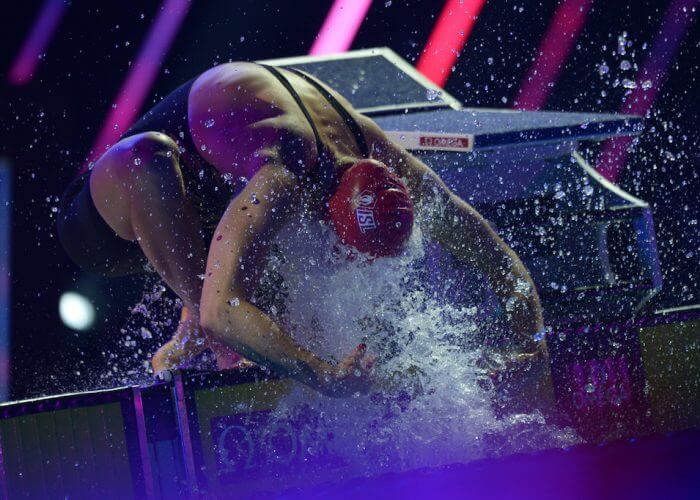
Big Splash … how far do the droplets fall? – Photo Courtesy: Gian Mattia D’Alberto/LaPresse
f. Consistency of offer
- There is already talk of new formats, changes to take account of the many voices weighing in on requests and recommendations for change. Inconsistency is a killer in world-class sport, however. Whatever the League decides next it should attempt to settle on a general format that is easy for audiences to understand. Complex formulas and rules turn audiences off. The result needs to be instantly understood by the audience based on knowledge and a sense of fairness. Skewing the MPV scores to those who race freestyle skins will wear thin.
- Among reasons why tennis, golf, football and many other sports are higher up the pecking order of popularity is the simplicity of their offer, format, audience accessibility and ease of understanding when it comes to the rules that make a difference to the play unfolding in the live environment.
- There’s a reason why the egg and spoon race is a school staple but never made it to the Olympic Games; the League needs to be deaf to ideas that work well on Saturday-night game shows but cheapen world-class sport and would risk turning race day for towering athletes into the gimmick-driven realm alien to sports fans.
- The lights and presentation of Game shows works – the ‘cheapness’ of such things does not lend itself to promoting world-class athletes. A careful balance needs to be struck.
- It was an evolving process and the League did well on occasions to step up from one meet to the next when presentation and program were less than optimal: that showed in an improvement of poolside interviews with coaches and athletes. All of that needs honing further and a certain standard needs to be reached on a more consistent basis across the whole series of events.
4. Press
- Almost non-existent at events and coverage worldwide very sparse in mainstream media: that should be a red-flag to organisers. No major sports event in the pro field restricts itself to broadcasters and only the ‘live’ viewable moment.
- Deeper analysis, profile-building, consistent year-long coverage in between the two-hour windows – none of that is premium broadcaster territory. It relies on written press penning its own content.
- Mainstream media rarely pick up a press release if they have no contact and relation with a sport or other activity.
- Any press releasee to main stream media with the term ‘skins’ in the headline but no explanation as to what that means will go straight in the trash can: media desks have no time to work through such ‘niche’ stuff. They simply won’t do it. The League and swimming must find ways of engaging the written media beyond the press-release, in-house view and message that simply does not work in terms of appeal to mainstream media.
- ‘We do our own social and press releases’ is a poor excuse for not engaging with mainstream media. Bog pro sports know it – and get it covered.
- The context, the peg of an event all need to be considered, placed in context and archived for season-long scope. The written media is critical to that process (just ask a broadcaster and its research department!)
- The League was unprepared to host the mainstream media and written press. That part of the offer was almost completely overlooked and that played out through the season, the League widely ignored far and wide.
- There is talk of moving up from 7 to 27 events in Season II. The League needs to be careful not to follow the FINA bolt-on diet that has made the swimming calendar a maelstrom of incomprehension to wider audience. Swimming is not basketball and what works in one arena will not work in another.
- A season that runs from September to April void of the clutter of the current requires a big cultural and organisational shift in the sport: trials season is often March-April-May for many countries, whose swimmers are unlikely to want to be at an ISL Final ion it costs them a place on their national team for Olympic Games, World Championships and events that matter yet.
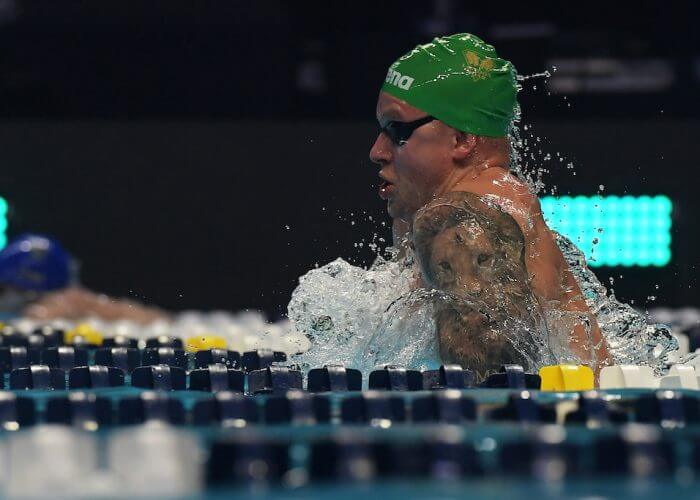
Adam Peaty wears his lion on his sleeve – Photo Courtesy: Gian Mattia D’Alberto/LaPresse
5. Season
- There was too much time between the meets, particularly between the Derbies and the championship meet. In the lull, too much time exists for the ISL to be forgotten and fall off the radar.
6. Team Strength
- The bottom teams, particularly the N.Y. Breakers, were out of their league when it came to a competitive balance. Due to this imbalance, the intrigue in the team race was lessened.
- The Derbies felt too predictable for “elimination matches.” (This will probably change when more teams are added).
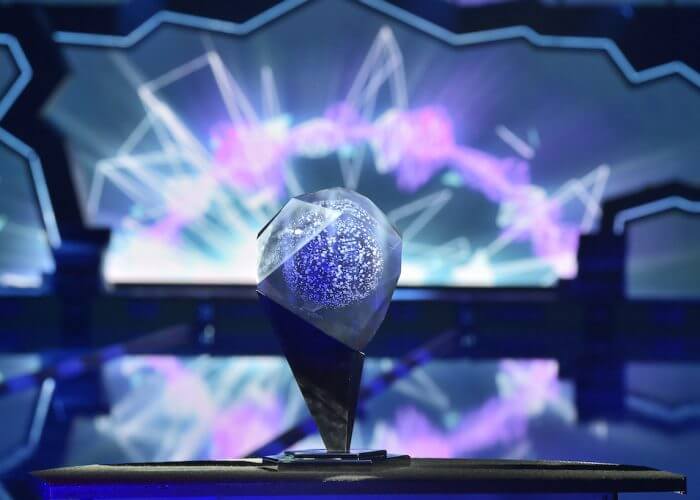
The ISL Trophy – Photo Courtesy: Fabio Ferrari/LaPresse
7. TV Production
- TV production is weak. They try to get too fancy with camera angles. Keep it simple!
- Seeding: random lane assignments can lead to difficulty in watching when two best swimmers are in lane 1 & 8.
- Relays seem particularly difficult to watch for some reason.
- The relay events reflected too much of a guessing game concerning who was in the pool for each of the teams. The announcers frequently revealed who was racing for the team out in front, but other teams were overlooked.
- The athlete interviews were either similar in nature or didn’t bring much reflection to the broadcasts. Some of this issue was the result of swimmers just getting out of the pool. Other issues related to the questions asked, which were surface queries and did not lend themselves to deeper responses.
- The broadcasts of most of the meets ended relatively abruptly after the Skins race, as opposed to giving the winning team the chance to reflect on the victory or show their celebration.
- Not enough depth of knowledge for current swim fans watching on TV. A balance needs to be struck so that you don’t alienate the wider audience you want to engage with while keeping existing fans. Some of the commentary, general and expert, risks alienating both groups and should be taken into consideration by broadcasters and the poolside team of commentators fast running shy of new and interesting questions beyond ‘what does this all mean to you’.
- Important not only to have former swimmers doing the poolside interviews: trained professionals who understand the importance of moment and setting their questions accordingly need to work alongside the swimmers, whose questions can sometimes sound too nerdy and in-house for a wider audience hearing very similar pre-set questions too often.
- Athletes also need to be aware of what makes great viewing. Teams were often not together and team boxes empty but for coaches and straggle of swimmers. This may be inevitable given the nature of swimming and the athlete’s need… The first and last races have tons of people watching in the team box but in the middle of the meet, they are all warming up or swimming down, not watching their teammates.
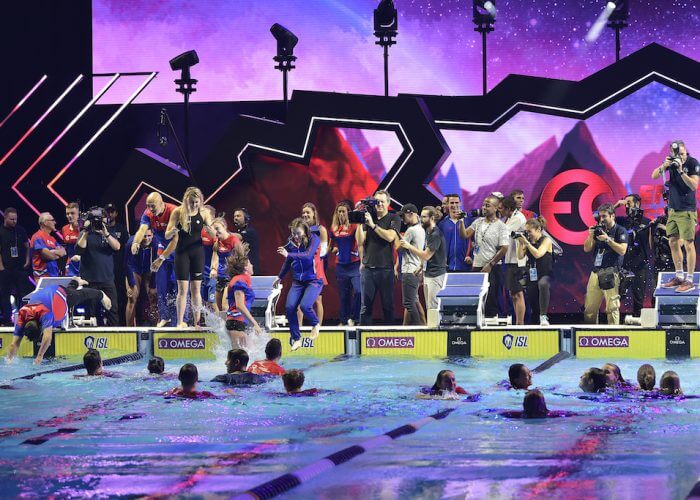
The first images of a Pro Swim Team – Energy Standard – celebrating success as winners of the International Swimming League Trophy as members of squads void of national flags and stacked with athletes and coaches from many nations – Photo Courtesy: Fabio Ferrari/LaPresse
8. Venues
- Vegas: glamorous and great to have swimming in such a place, the use of temporary pools (first seen at London 1908 and introduced as a regular feature of elite international swimming at the 1995 World Short-Course Championships on Copacabana Beach in Brazil) allowing consideration of venues that would previously not have been able to host big swim events. The downside of Vegas was to be seen on the first day of action at the Final Match: we had reports that action got underway with 500 people in the stands. That’s not a pro-sport crowd. Long Beach and a fair few other locations might not have the top-end appeal of the Mandalay Bay Resort and Casino but they do have what Budapest and other cities have proven they have time and time again: a swimming crowd willing to turn up in numbers, pay for tickets and raise the roof.
- Vegas on the cusp of Christmas: hellishly expensive for folk to get to, particularly at this time of year – and that thought includes mainstream media and budgets set over a year in advance, as mentioned elsewhere in these notes.
- Only present in the U.S. and Europe – we note with a smile that this is already happening, Kosuke Kitajima’s involvement and the news on the last day of the first season of the League significant to its development.
- Home meets? In the U.S. DC Trident got a home meet, but Indianapolis and Texas don’t have teams. That felt kind of strange. London, Budapest got meets for their home teams. Why no meet in Cali or New York?





Thanks for the informative articles. My two penneth:
I LOVED the format overall and it has pulled me back into watching swimming and brought my teenagers into it too!
I agree ISL is a weak acronym and meaningless other than to the few who know swimming. Needs at least ‘swim’ in the title.
Agree colours could be better including hats….there were 2 blue in the final which was confusing.
It was frustrating finding how to watch it in the UK (and also having to pay to watch on Eurosport!).
Vegas looked empty w.r.t spectators but was clearly exciting for swimmers yet London was sold out and had such atmosphere!
Loved the 2hr max schedule so would hate to see it longer by either adding 800m events (but then I was a sprinter) or doubling team numbers which may result in heats…..
They ABSOLUTELY need to show times as sooo frustrating not to know how close events were and how near to record swimmers were.
I thought 8 or so meets was enough…..I’d never have kept my interest up for 27! And the 3/4 month close packed run up to Christmas worked well.
Skins were very exciting but agree too free biased and would be I interesting to have skins for different strokes at different meets.
I’ve still no real idea how the ‘professional’s bit works; Do swimmers buy in? How does prize money work etc – you have to dig deep into articles such as this to glean info so the general public have no idea!
But overall it is so so good for swimming! Hope it stays for good!! ?
Thanks Nic. Many more comments such as that are needed in swimming far and wide. Discussion, let alone debate, is something swimming has been fairly poor at, any criticism, often no matter how constructive, deemed to be ‘negative’, so silence (a void in which negativity and stagnation rule) top often reigns, the wider audience that might be a long way from the edge of the lights from whence they might listen and see more.
I agree the colours could have been coordinated better. The team could definitely be more balanced, sprint free bias could balanced with other strokes, maybe a different stroke at a different meet. I found from a swimming background, the SCM format shed more light on that format that I’m sure many swimmers internationally grew up swimming a lot. Perhaps SCM could become the “iswim-sized pool” to the LCM “Olympic-sized pool”. Besides, there are different ice rink formats between nhl and at the Olympics anyway, many saying the gameplay being affected by this, so I believe SCM could definitely stay, (although many teams being ahead in relays swimming in opposite directions could get confusing to the untrained eye). Time should definitely be included. Some kind of inclusion of distance events, should be considered for sure, being a distance swimmer myself, however I believe this should mostly depend on the goals of the league: to keep people less well-rounded with swimming more entertained, or maintaining equality for those already in the swimming community. Finally I do believe the frequency of meets and duration of the season was perfect, as it kept the season short and snappy, staying true to the short and snappy nature of the league, (keeping meets no longer than 2 hours, etc.)
Interesting observations and I agree with many. I actually didn’t find the scoring system that difficult to understand. It was explained by the commentators frequently enough and didn’t seem any more complicated than watching tennis, football, or baseball for the first time (what is ‘love’ or a ‘down’ or an inning?). When watching any new sport it takes watching it a few times to get the hang of it. The most basic concept – get a hand on the wall first – doesn’t require explanation:)
Our family and 2 young swimmers went to the first event in Indy and we were prepared for a few production misses being the first one, but it’s amazing to say we were at the first one! We wish we had a printed program from that day; with bios of all the swimmers and coaches. Chad LeClos‘ brother was sitting by us and we learned more about the international swimmers from him. Camera operators must know swimming and telecast people MUST be swimmers. In the finals the commentators were giddy about the plexi wall and referred to looking through the wall at the swimmers “like watching Shamoo” (the whale from a water park show) WTH??? I also agree the media coverage and social media push needs big attention in year two. Coming off the Olympics there will be the biggest interest in swimming from expanded audiences; it’s a huge opportunity for the league to get an integrated marketing and media relations strategy implemented. Cheers to year 2!